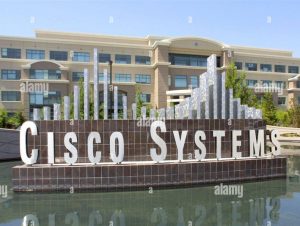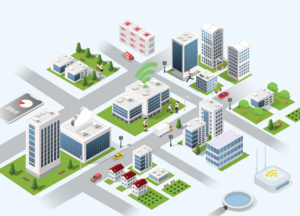IntServ – WAN Availability and QoS
3 min read
The IntServ QoS model was designed for the needs of real-time applications such as video, multimedia conferencing, and virtual reality. It provides end-to-end QoS treatment that real-time applications require by explicitly reserving network resources and giving QoS treatment to user packet flows. The IntServ model applications ask the network for an explicit resource reservation per flow and use admission control mechanisms as key building blocks to establish end-to-end QoS throughout the network.
IntServ uses Resource Reservation Protocol (RSVP) to explicitly request QoS for the application along the end-to-end path through devices in the network. Before an application begins transmitting, it requests that each network device reserve the necessary bandwidth along the path. The network, in turn, accepts or rejects the reservation per flow based on available network resources.
IntServ requires several functions on each of the routers and switches between the source and destination of the packet flow:
- Admission control: Determines whether the requested flows can be accepted without impacting existing reservations
- Classification: Identifies traffic that requires different levels of QoS
- Policing: Allows or drops packets when traffic does not conform to the QoS policy
- Queuing and Scheduling: Forwards traffic for permitted QoS reservations
Designing End-to-End QoS Policies
Cisco has developed many different QoS mechanisms, such as queuing, policing, and traffic shaping, to enable network operators to manage and prioritize the traffic flowing on a network. Applications that are delay sensitive, such as VoIP, require special treatment to ensure proper application functionality.
Classification and Marking
For a flow to have priority, it must be classified and marked. Classification is the process of identifying the type of traffic. Marking is the process of setting a value in the IP header based on the classification. The following are examples of technologies that support classification:
- Network-based application recognition (NBAR): This technology uses deep packet content inspection to identify network applications. An advantage of NBAR is that it can recognize applications even when they do not use standard network ports. Furthermore, it matches fields at the application layer. Before NBAR, classification was limited to Layer 4 TCP and User Datagram Protocol (UDP) port numbers.
- Committed access rate (CAR): CAR uses a rate limit to set precedence and allows customization of the precedence assignment by user, source or destination IP address, and application type.
Shaping
Traffic shaping and policing are mechanisms that inspect traffic and take action based on the traffic’s characteristics, such as DSCP or IP precedence bits set in the IP header.
Traffic shaping involves slowing down the rate at which packets are sent out an interface (egress) by matching certain criteria. Traffic shaping uses a token bucket technique to release the packets into the output queue at a preconfigured rate. Traffic shaping helps eliminate potential bottlenecks by throttling back the traffic rate at the source. In enterprise environments, traffic shaping is used to smooth the flow of traffic going out to the provider. Smoothing the flow is desirable for several reasons. For example, in provider networks, it prevents the provider from dropping traffic that exceeds the contracted rate.




